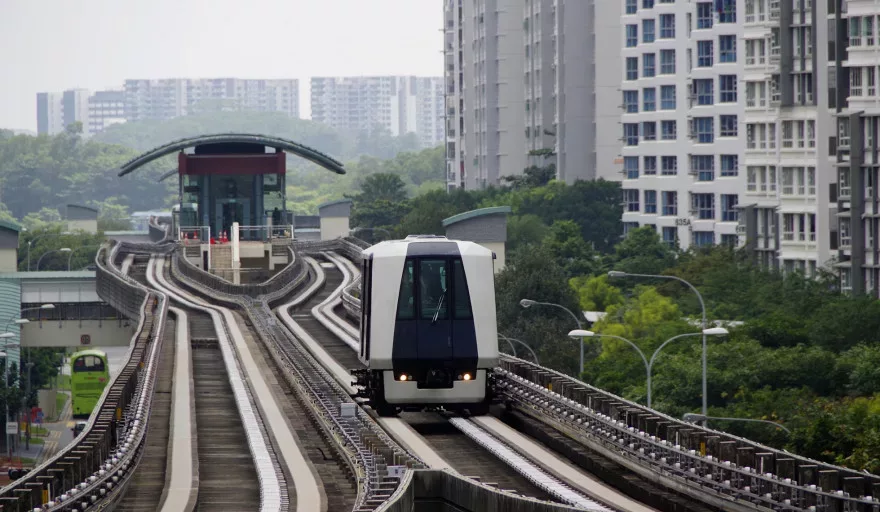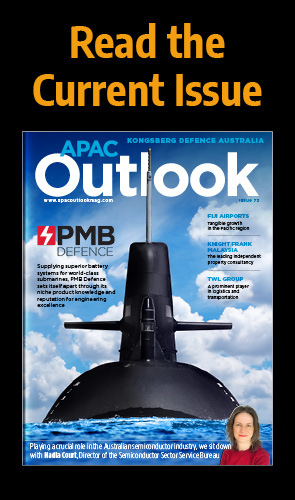Examining the role of green urban mobility in the fight against climate change and the potential for sustainable transport in continental mobilisation.
In an area that hosts the greatest regional population in the world, along with some of the fastest growing economies, the topic of mobilisation in an age defined by a prevailing climate crisis becomes a pertinent issue.
With economies across Asia accounting for almost two-thirds of global growth, regional governments have the means, and increasingly, the incentive, to invest in a more sustainable transport infrastructure.
The rapidly growing rate of urbanisation across Asia Pacific shows no sign of cessation – a 2016 report from the Malaysian Institute of Planners recorded an increasing rate of urban population at 1.83 percent across Asia Pacific – a number that has only continued to grow in recent years.
The uneasy bedfellow of this dynamic movement is the issue of transport demand and the attendant environmental concerns of rising motorisation and automobile ownership; primarily, harmful greenhouse gas emissions and extreme congestion. Indeed, worldwide transport accounts for more than a quarter of energy usage and one-fifth of global CO2 emissions with both Mumbai in India and the Philippine’s capital of Manila listed amongst the world’s top ten most congested cities. This leads to citizens bleeding valuable time and fuel whilst contributing to poorer general health due to rising levels of air pollution.
The many teeming metropolises of Asia Pacific have become the background of this transport dilemma, but also the dynamic arenas within which new urban transportation initiatives are trialled and tested. This spans road and rail, but also alternative means of transport, such as cycling schemes including the Transformative Urban Mobility Initiative (TUMI) which is dedicated to a new bikeshare system for the Vietnamese city of Hoi An, and emission-free e-scooters which have recently taken Singapore by storm.
The ongoing coronavirus pandemic has highlighted the welcome benefits of a general pause in urban mobilisation, due to regional lockdowns and the advent of homeworking. Indeed, according to the International Energy Agency, coronavirus-related travel restrictions introduced a significant six percent drop in CO2 emissions in 2020 throughout the region.
Whilst pausing transport on this scale is unrealistic, in an attempt to mitigate these harmful effects, the acceleration of ‘green transport’ across Asia Pacific presents a path forward. Sustainable, or ‘green’ transportation concerns modes and methods of transport that are fuelled by renewable energy sources, as opposed to fossil fuels and other dwindling natural resources.
There is significant scope for developments in this area as Asia Pacific becomes a booming market within the global transportation sector. The same report from the Malaysian Institute of Planners recorded a ‘global score’ in green mobility performance of 42.8 percent average across cities in the APAC region, in comparison to the estimated average score of 43.9 percent across other cities around the globe.
Since a primary issue is the rise of individual motorists, heightened efforts towards the development of safe and reliable public transport systems also represents progress within the sector, such as government efforts to support rail transportation. Improved public transit not only decreases individual emissions, but also introduces greater social cohesion.
Challenges such as a lack of clear vision, strategy and not to mention an inadequate infrastructure hamper regional development, meaning that integration and coordination are the way forward. This is evidenced by organisations such as the Partnership of Sustainable Urban Transport in Asia (PSUTA) who work with stakeholders across the cities of Hanoi, Pune, and Xi’an as policymakers to combat the uncontrolled growth of motorisation, and the Cities Development of Asia Initiative (CDIA), who aim to help cities decarbonise transport systems. With particular emphasis on non-motorised transport, the CDIA advocate transit-oriented city developments such as the development of ‘superblocks’ or ‘15-minute neighbourhoods’, whereby an urban community’s essential services are located within walking distance to eliminate transport needs – an idea which has already been well-received in Singapore.
Other gamechangers across the region are devoted towards transport solutions that promote sustainable development, with fuel-efficient initiatives designed to reduce pollution, congestion, and safety incidents on the road while serving the needs of the population.
The Sustainable Urban Transport Index (SUTI) was implemented by the Economic and Social Commission for Asia and the Pacific (ESCAP) and is instrumental in performing mobility assessments that track the progress of sustainable urban transport systems across Asian cities, through ten indicators covering access, safety, reliability, and of course, emissions.
To date, these evidenced-based assessments have been applied to cities including Hanoi, Colombo, Kathmandu and Dhaka amongst others, with tests currently ongoing in Tehran, Thimphu and Ulaanbaatar. SUTI continue to advise and guide cities across Asia Pacific, and even took to conducting virtual urban mobility and capacity building workshops throughout 2020 in the face of the pandemic. Through these initiatives, ESCAP advocate for sustainable transport policies concerning urban transport, road safety, and the implementation of Intelligent Transport Systems (ITS), thereby enabling cities to identify the policy gaps and vitally track their progress towards achievement of the Sustainable Development Goal target rating of 11.2 on urban mobility.
Alongside vital regulatory agencies such as ESCAP, a major player performing an active role in this space are Alstom – the global company providing innovative solutions for tomorrow’s mobility needs, responsible for trailblazing operations such as the world’s first hydrogen-powered train. Alstom have a fittingly large presence across Asia Pacific – accounting for 11 percent of the Alstom Group’s global revenue – with numerous success stories of transformation reflecting the promising trajectory of the region.
In the Indian city of Lucknow, Alstom has supplied 20 Metropolis trains as part of their green public transport solutions prioritising the use of recyclable materials alongside reduced noise and emission levels. Currently transporting around 430,000 passengers a day, the system is estimated to save approximately 47,000 tonnes of fuel by 2030, with an estimated growth in users of the transport system from 10 to 27 percent by 2030, in line with the expansion of the metro system.
The Asian market retains huge prospective growth, attracting private investors and governmental support alike. Developments in the aforementioned ITS define current trends, concerning the utilisation of big data, open access, connected vehicles, and autonomous vehicles, attracting private sector passenger transport providers.
A complete shift away from polluting motorised vehicles and an embrace of sustainable, low-carbon transport options will not happen overnight, but with smart spatial planning and increasing efforts in policy makers and regional governments backed by solid investments, Asia is well and truly on the road to a greener future.





















